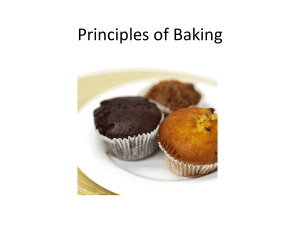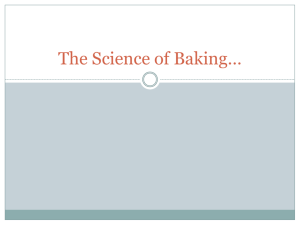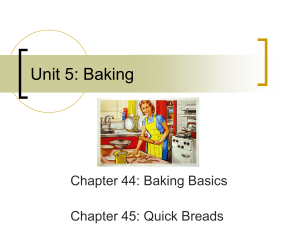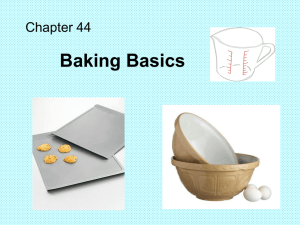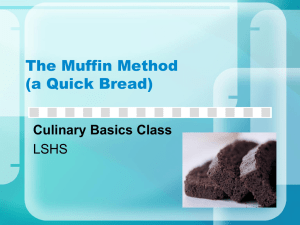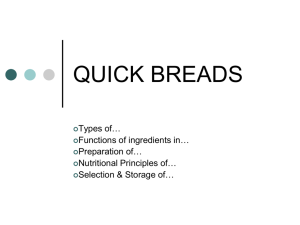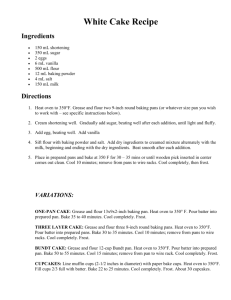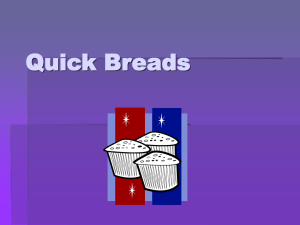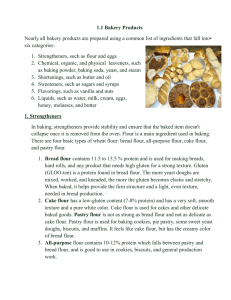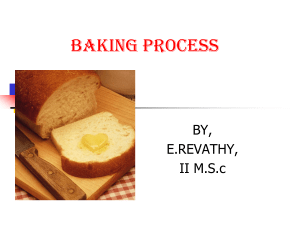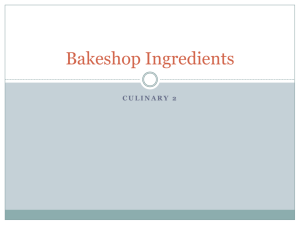BAKING BASICS
advertisement
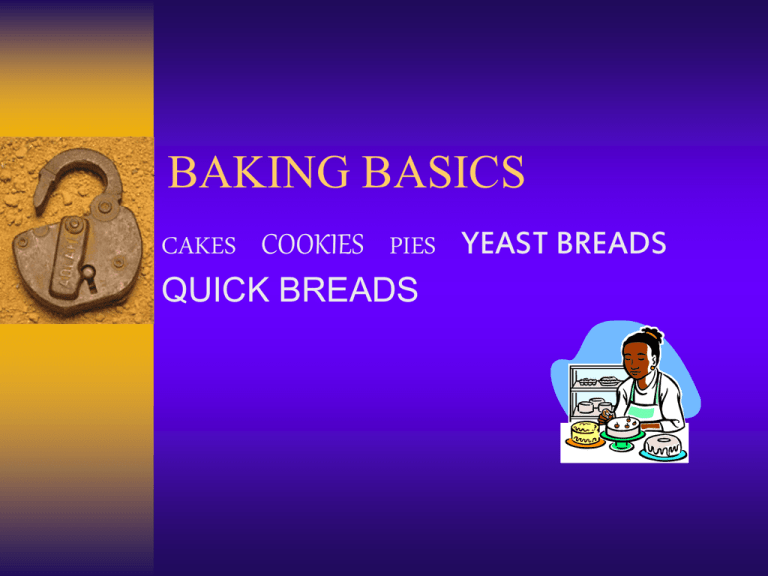
BAKING BASICS CAKES COOKIES PIES YEAST BREADS QUICK BREADS All baked products need most or all of these basic ingredients: FLOUR LEAVENING AGENTS FATS & OILS SWEETENERS OTHER INGREDIENTS When preparing baked goods it is also important to understand some basics about the baking process: Oven temperatures Pans Placement in the oven Timing Cooling and removing from the pan. FLOUR Provides the structure of the baked product. When liquid is added flour absorbs it, swells and sticks together. Mixing or kneading create gluten (the proteins in flour that provide the glue that traps air in the product) There are many types of flours with different characteristics, they give the baked product different flavors and textures. Leavening Agents (part one…) Air introduced through Creaming fat and sugar together. Sifting flour. Beating batter. Whipping egg whites. Leavening Agents (part two…) Steam when large amounts of water and high heat are present Water turns to steam and product rises The steam leaves a cavity in product (great for fillings) Leavening Agents (part three…) Chemical – There are two basic kinds Baking Soda – used with an acidic food (i.e. sour milk or lemon juice) Alkali & Acid combine to form carbon dioxide which expands when heated, causing product to rise. Baking Powder – combination of baking soda & dry acid Addition of liquid causes reaction that forms carbon dioxide. Leavening Agents (part four…) Yeast – Microscopic plant that reproduces quickly Needs food: sugar and flour Needs moisture Needs warmth Gives off carbon dioxide as it grows Create bubbles in dough Bubbles expand when heated and dough rises. Give baked products a special flavor and smell. Fats and Oils Coat gluten to keep it from becoming over developed Adds richness and flavor to baked product Helps keep baked product tender Ex. Butter, shortening, oil, margarine Sweeteners Add flavor and sweetness Helps baked product brown Helps baked product remain tender Ex. Sugar, honey, corn syrup, powdered sugar, molasses OTHER INGREDIENTS Eggs – Add color Trap air to help with leavening Hold baked product together Add flavor and richness Add tenderness and texture OTHER INGREDIENTS Seasonings – Add flavor and color to baked product. Salt – stimulate taste buds to taste other flavors. Ex. Spices, extracts, chocolate, nuts, and fruit. The Baking Process Oven Temperature when baking a leavened product use the exact temperature in the recipe. During baking: Product rises Crust heats Moisture evaporates Crust dries The Baking Process Pans – can affect results. Material – conduct heat differently, changes cook time. Size – recipes developed for certain sizes, be careful to follow pan size recommendations. The Baking Process Placement in the ovens Pans must be placed in ovens so that air can circulate freely. One - in center Two – separate racks opposite sides Etc. Be sure pans do not touch, it creates hot spots where food may burn or over cook. The Baking Process Timing be sure to use a timer, check close to done time, may vary by oven. Cooling & removing from pan Remove from pan immediately, unless recipe says otherwise Cool on cooling rack to allow even cooling
